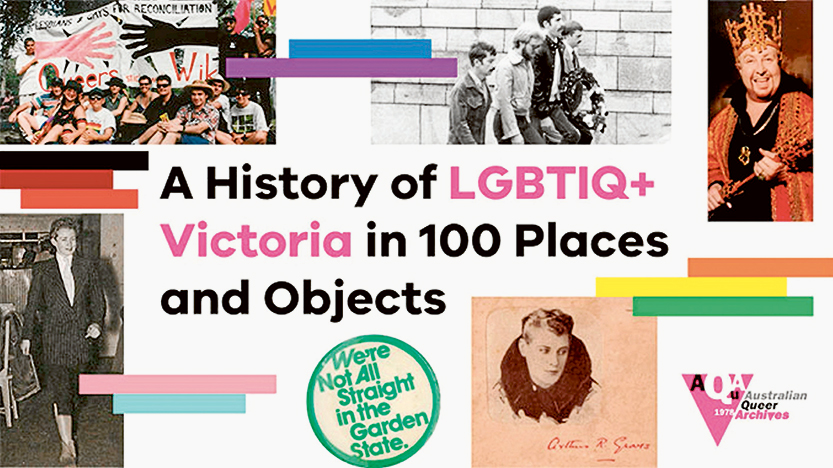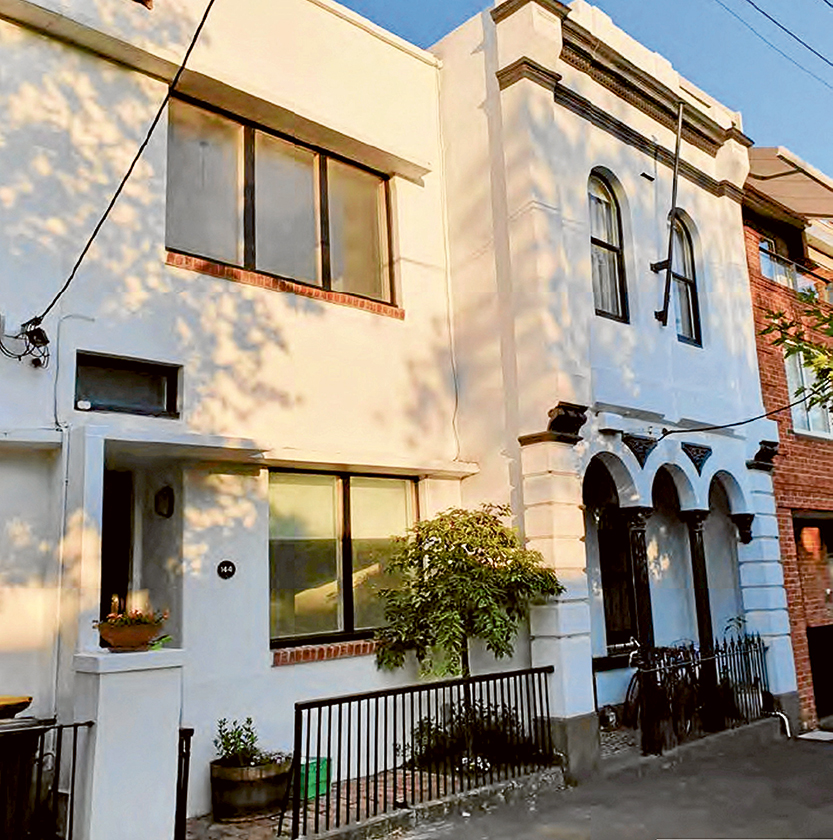Landmark LGBTIQ+ report documents local history
On March 1 the Australian Queer Archives and Heritage Victoria launched A History of LGBTIQ+ Victoria in 100 Places and Objects, a ground-breaking study of queer people, places, objects and stories in Victoria.
The release, the first of its kind in Australia, coincided with the 40th anniversary of decriminalising sex between consenting men in Victoria in 1981.
Looking back as far as the 1840s, the report reflects the experiences of LGBTIQ+ communities and their histories, examining the lived reality of these communities, and reveals the hidden histories of political activism, social life, “treatment”, punishment, entertainment, and health.
Among those 100 places and objects is “The Hub” in West Melbourne and the love letters of Harry Bruin and Ben Morris, held at the Public Record Office Victoria.
The Australian Queer Archives and Heritage Victoria worked with the State Library of Victoria, Museums Victoria and the National Gallery of Victoria and received more than 150 submissions from LGBTIQ+ and heritage communities to shape to the report.
The work of uncovering surviving documentary and built heritage of LGBTIQ+ Victoria was challenging. Before 1981, keeping records of a “criminal” relationship increased the risk of prosecution, discrimination and social ostracism leaving so much of this history hidden, obscured or lost.
President of the Australian Queer Archives Angela Bailey said the report was as a step towards incorporating LGBTIQ+ social history into Victoria’s heritage system and would be a valuable reference point for future management of heritage places and objects with queer histories.
“On this historic anniversary of decriminalisation, this report paves the way for the recognition of LGBTIQ+ stories to become part of our broader shared histories across the state,” Angela Bailey said.
Local communities will also be able to use the report to apply for heritage listings and as the basis for local history projects like history walks, commemorative plaques and art works.
The Hub
Located at 142 Adderley St, West Melbourne, The Hub was Victoria’s first pride centre.
John Willis – a pastor with the gay-focused Christ’s Community Church – bought the building in 1979 with the intention of setting up a gay community centre.
“The West Melbourne building had six bedrooms, carpeted floors and was in good shape, having been recently repainted. Christ’s Community Church held services in the building on Sundays and otherwise it was available to community groups seven days week,” the report read.
“It included a kitchen with tea-making facilities. Among those who responded to the invitation to get involved with the newly established centre, known as The Hub, were the Australian Gay Archives, as they were then called (see Australian Queer Archives) which held its weekly working bee and open night there, Al-Anon and Alcoholics Anonymous, and Transcare, a group associated with Seahorse, a club which described itself as a being for ‘crossdressers’ and ‘transvestites’.”
The report also highlights The Hub’s library, “which it boasted held the largest collection of homosexual fiction and non-fiction in Australia”.
“There were some 5000 volumes in the collection, which were mostly donated but some were sourced through Willis’s dedicated scouring of bookshops and market stalls in Australia and overseas.”
“In the late 1980s, after several years of being constantly on call for media interviews and to support members of the community, Willis decided to sell the building. For a decade, The Hub provided a service for the queer communities of Melbourne that was not to be available again until the establishment of the Victorian Pride Centre in 2021.”
The Hub was the origin of the John Willis Gay and Lesbian Fiction Collection, which is now held by the University of Melbourne library.
Love Letters
A collection of 20 letters between Melbourne men Ben Morris and Harry Bruin over a period of several months in 1919 is held by the Public Record Office Victoria.
“Love letters between men from this period are extremely rare in an Australian context, and globally.”
They were seized by police from Bruin’s home in Harcourt Street, Auburn in October 1919. The police were investigating a report that Bruin and Morris were conducting an intimate affair,” the report read.
“The relationship came to light when the mother of one of Morris’s friends, having failed in her attempt to blackmail Bruin, went to the police. Blackmail was an ever-present danger to homosexual men at that time. Homosexual sex was against the law and even gossip alone could ruin reputations, careers and social standing. In refusing the demands of his attempted blackmailer, Bruin took an enormous risk.”
But because the letters contained no descriptions of sex acts, the matter was dropped.
The report outlined that letters like those are rare as often the correspondence was destroyed by the writers or recipients to prevent it falling into the hands of authorities, blackmailers and others.
“The emotional letters provide rare evidence of a deep romantic affection between two men in their own words.”

Jo Ryan unveils Ordered Chaos at Blender Studios




 Download the Latest Edition
Download the Latest Edition